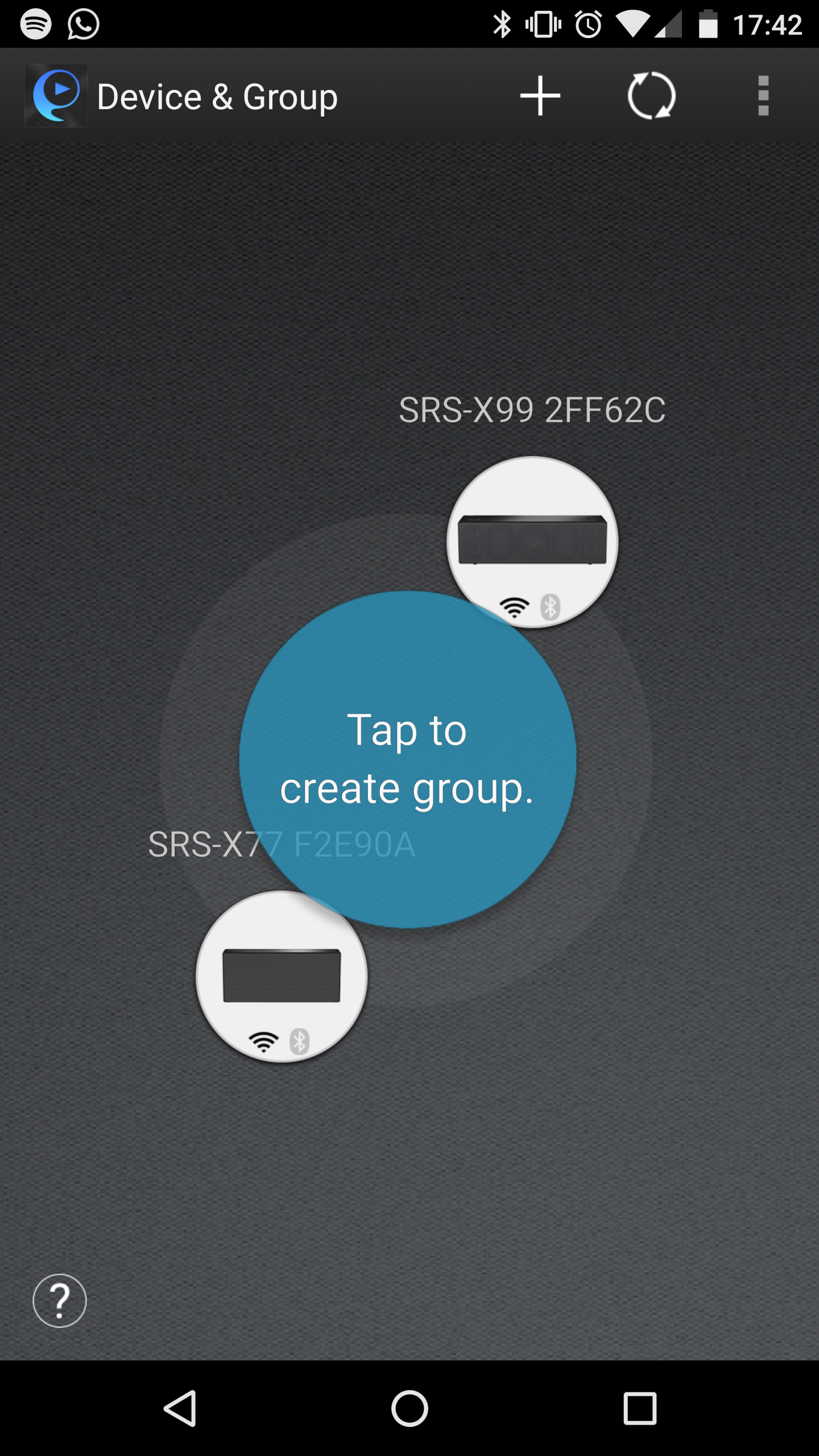To help us provide you with free impartial advice, we may earn a commission if you buy through links on our site. Learn more

Back in 2014, I was very impressed by Sony’s SRS-X9 speaker. It delivered stunning sound that matched its elegant and stylish design. The newest version, the SRS-X99, builds on this model by adding some new features to bring it bang up to date for 2016, including support for Google Cast, Spotify Connect and multiroom functionality.
It slots into Sony’s multiroom speaker range at the higher end of the spectrum just above the SRS-X77. It’s significantly bigger than the X77, too, measuring 430x133x125mm and weighing a reassuring 4.7kg. Unlike the SRS-X77, which is eminently more portable and includes a built-in battery, the SRS-X99 isn’t likely to be moved around quite as much.
The heavy use of glossy, piano black glass makes a welcome return for the SRS-X99, and it gives the speaker a gorgeous, luxurious appearance. Its clean edges and uninterrupted front grille look very classy, and it feels premium to the touch. That said, you’ll probably want to refrain from touching the SRS-X99 too often, as its surface is an absolute magnet for messy smudges and greasy fingerprints – so much so that there’s a microfibre cleaning cloth included in the box to help the speaker look its best.

Luckily, the SRS-X99’s touch controls are located on the top corner of the speaker, making any potential marks less obvious under bright light. They’re backlit, too, so they’re easy to find in the dark, and a proximity sensor will turn them on only as you reach out to touch them. It’s a subtle effect that’s both functional and charming.
Using the controls, you’re able to swap between the speaker’s different connection modes including Network, Audio In and Bluetooth, the latter of which can easily be enabled via its NFC contact point. You also get a simple, minimalist remote control, which has media playback controls as well as different input buttons.
Connections
On the back of the cabinet you’ll find both USB-A and USB-B ports. The former can be used to charge your portable devices, such as your phone or tablet, as well as connect external storage devices with local music files, while the latter can be used to connect the SRS-X99 to a computer for direct playback. Alternatively, you also have a 3.5mm auxiliary connection.
The SRS-X99 supports a wide array of formats, including FLAC, AAC, ALAC and DSD along with MP3s. This being Sony, it comes as no surprise that there’s high-resolution audio support as well, so playback of 192kHz/24-bit files isn’t a problem. This will be particularly attractive to any audiophiles with high-resolution masters.

If all that wasn’t enough, the SRS-X99 has built-in dual-band Wi-Fi and an Ethernet port for a wired network connection, so you’re certainly not left wanting when it comes ways of accessing your music. A pop-out antenna can be used to improve wireless reception, but once you’ve connected the SRS-X99 to your network, which can be done through Sony’s SongPal app, you open up Spotify Connect, AirPlay, Google Cast and DLNA as wireless connection options alongside Bluetooth.
Sony’s SongPal app can be used for managing multiple speakers, changing EQ settings and accessing music stored on your home network or device. Grouping speakers together is easy and intuitive, too, thanks to its simple interface. You just need to tap and drag speakers connected to your network together in order to group them.

Sound Quality
In terms of driver configuration, nothing has changed from the SRS-X9. Sony’s still managed to pack in seven speakers here, and these consist of two 50mm magnetic fluid drivers, a central 94mm woofer paired with two passive radiators, two 19mm front wide dispersion tweeters and two 19mm top tweeters. The front speaker grille can be removed using an included magnetic tool to expose the impressive drivers inside.

In terms of digital sound enhancement, there’s both DSEE HX, which upscales compressed files to near high-resolution levels, and Clear Audio+, which applies digital signal processing for crisper audio. I’ve never really been a fan of Clear Audio+, though, as while audio does sound marginally more detailed, it also adds in a tad too much bass, colouring the sound.
Thankfully, you’re afforded a decent amount of control over the EQ to get your music sounding just how you like it. On a flat EQ, the SRS-X99 sounds universally great across all genres. Orchestral tracks have presence and space, while hip hop has plenty of low-end drive and aggression. Listen to high-resolution tracks and you can begin to pick out even more detail. Acoustic tracks sound ethereal, with singer’s breathing becoming even more discernible for that authentic, in-the-room type of experience. Like the SRS-X9 that came before it, the SRS-X99 continues to sound excellent.

Conclusion
Perhaps unsurprisingly, considering how good the SRS-X9 was, the SRS-X99 remains an excellent speaker. The additions of Spotify Connect and Google Cast are useful and subsequent improvements to the SongPal app make it a fully-functional multiroom speaker. It trumps similar high-end speakers like Sonos’ Play:5 when it comes to connections and high-resolution audio support, but Sonos arguably still wins in terms of multiroom convenience and delivery, as it supports a wider variety of online streaming services. Depending on what you need, you certainly won’t be disappointed with the SRS-X99, especially if you shop around, as it’s often available for around £399, making it slightly cheaper than the Play:5 and therefore even better value.






